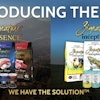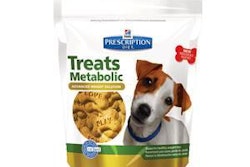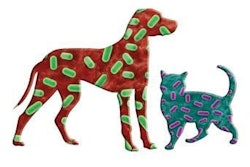The 14th Annual American Academy of Veterinary Nutrition and Research Symposium was held in Nashville, Tennessee on June 4, 2014 at the Gaylord Opryland Resort. The symposium coincided with the American College of Veterinary and Internal Medicine Forum. This year the symposium attracted 155 professionals from around the globe. The attendees were treated to more than 30 presentations of original research, reviews and poster presentations on topics ranging from clinical care and diagnostic techniques to general animal nutrition and food product evaluations.
While it is often the lament of this column that we lack vital information regarding many of the ingredients used in petfoods, meetings such as this one are a testament that quality nutrition research is still being conducted and shared openly among the scientific community. As it relates to this column and ingredient issues, a few papers from this program warrant additional attention.
Papers addressing the various aspects of the animal’s gut microbiome and its modification from supplementation with probiotics were popular. In one presentation, Cooper and colleagues from Purdue University fed military working dogs a special Bifidobacterium animalis AHC7 probiotic or tylosin during the 10-day quarantine period when being acclimated upon re-entry to the US. Diarrhea is often associated with quarantine stress. Unfortunately, contrary to the expected outcome, the probiotic did not alleviate the diarrhea—perhaps adaptation time was inadequate for the intended effect.
Wonderling and co-workers from Kemin Industries and the University of Iowa evaluated the feces of 16 in-home dogs fed diverse diets over a two-week period that were supplemented with probiotics and found that shifts in the various microbial populations increased over the two weeks of the experiment. This would suggest there is a longer term adaptation of the gastrointestinal tract than previously thought when these externally sourced microorganisms are provided.
The substrate offered in combination with the probiotic might have an influence, as well. For example, Beloshapka and co-workers at the University of Illinois presented information regarding the effect of various levels of a special resistant starch from Metabolon Inc. (HI-MAIZE 260). They reported a slight alteration or population shift to the microbiome in fecal samples, but the addition of resistant starch did not shift the short-chain fatty acid proportions or change the putrefactive compounds that the researchers expected.
In another study by this same group, in collaboration with researchers from Colorado State University, diets containing cooked bean powders (black bean and navy bean) fed to overweight/obese dogs led to a slight shift in microbial species in the feces to one of a generally more beneficial population mix. Much work still needs to be done in this area before we have a full picture, but it holds great promise for long-term health of our companion animals if all the puzzle pieces can be put into place.
Obesity continues to be an issue for the pet population as a whole. Beyond the simplistic notion of calorie consumption exceeding bodily energy expenditure, there may be other subtle factors at play. One course of action is to lower diet caloric density with the addition of fiber. However, not all fiber is created equal. Farcas and co-workers at UC-Davis reported that low molecular weight soluble fiber, something not detected in a typical Total Dietary Fiber (TDF) analysis, can be a key component of the TDF. If not accounted for, this could underestimate the energy value of the fiber supplementation regime and lead to less effective food solutions.
Another strategy that has been suggested recently is supplementation with a less energetically efficient fat source like coconut oil. However, when coconut oil was esterified to glycerol to form a medium-chain triglyceride, Villaverde and co-workers in Barcelona, Spain reported that the supplementation did not improve weight loss of dogs over 14 weeks of the study.
In the end it may just be a matter of economic means and willpower. When Linder, Sapowicz and Freeman (Tufts Cummings School of Vet Med) assessed body condition score relative to feeding habits for dogs and cats entering a low cost clinic (less affluent) or a private practice (generally more affluent) for 315 clients (86 cats and 229 dogs), they found that few owners (1.6%) knew their pets’ daily caloric intake.
In a busy world, the missing ingredient may just be that owners don’t consider this a priority, because when they do, success follows. Waites, Freeman, and Hancock reported that for clients who made it a priority by providing them monetary or “star” incentives, compliance increased and resulted in improved dog weight loss success relative to the targets. Interestingly, the monetary incentive was reported to be the strongest motivator for owners to achieve weight loss targets for their pets. So in this case the magic ingredient was the all-mighty dollar.
A few papers reporting results from dietary additives also deserve mention. First, cellulose has been deployed to help move hair balls through the digestive tract, but the amount of cellulose to include in the diet has been a bit of guesswork. In a poster presented by Vincent Biorge (Royal Canine Research Center, Aimargues, France), it was reported that 11% TDF or more in the diet was sufficient to increase hair appearing in the feces. At much more minute levels, fortification of “complete and balanced” foods with vitamins has been the norm for decades. Processing effects on vitamins by extrusion of petfoods have been evaluated but very little is available regarding the impact from canning.
The paper presented by Leslie Hancock and co-workers with Big Heart Pet Brands showed that thiamine and vitamin A content in canned foods declined dramatically with process time whether in loaf-type or chunks-in-gravy products, but pyridoxine levels were relatively stable through the process. This surprised many in attendance and points out the need for additional research to evaluate the broader group of vitamins in the canning process. Further, it also punctuates the need to evaluate all required nutrients in new food formats as the repertoire of new products are developed and launched into the market.
So, it may be cliché that we need more research to address important ingredient, petfood and pet health issues. But with the tireless dedication of the researchers in attendance at this recent AAVN symposium at least a few more questions were answered.

















